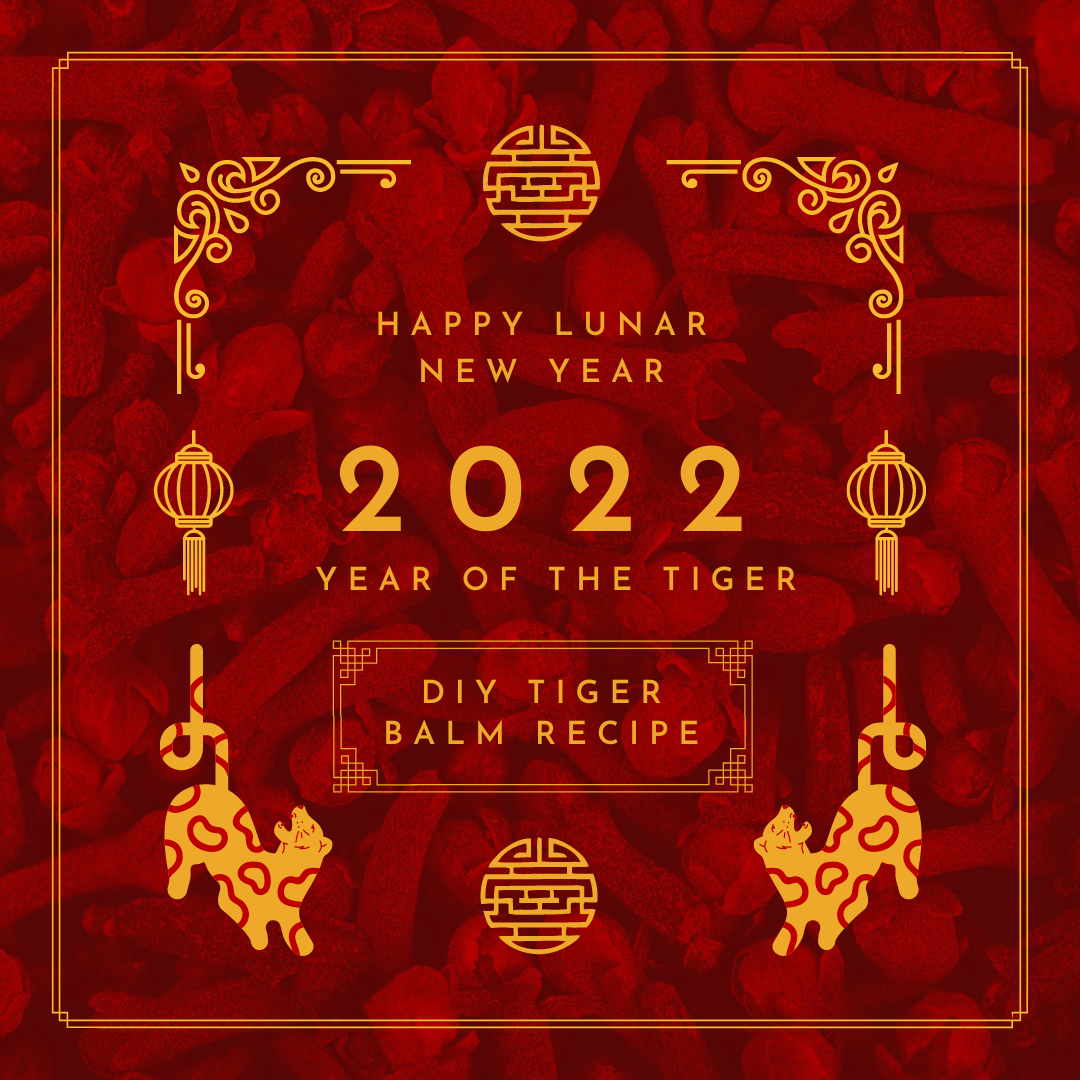The ingredients in the well-known Tiger Balm are based on powerful herbal blends of medicinal plants with healing effects that date back to secret herbal formulas from Chinese Emperors. In this case, the herbs are useful for easing muscle and joint pain, swelling, and sprains. These can be due to overexertion, accidents, or other conditions.
The traditional active ingredients include camphor, menthol, capsicum extract, methyl salicylate, and other essential oils like cassia (Cinnamomum cassia, similar to cinnamon), cajuput/cajeput (Melaleuca leucadendra), niaouli (Melaleuca quinquenervia), clove (Syzygium aromaticum), eucalyptus, and mint (Mentha). Unfortunately, recent-day tiger balm does include a base of petroleum. In addition to the serious environmental issues posed by petroleum (a byproduct of nonrenewable resources), its use on the skin is not recommended. It creates an illusion of hydration while actually forming a barrier over the skin that can trap not only moisture (think sweat, which our body does to get rid of toxins and to cool us) but toxins, dirt, and other contaminants. It additionally can carry cancer-causing contaminants. Some of these have been linked to estrogen dominance, a hormone imbalance that can cause a variety of health issues.1 Remember, skin is your body’s biggest organ and acts like a sponge. So this lunar year, why not celebrate by feeding it the good stuff.
It is best to use a kitchen scale for this recipe as droppers and spoons can be inconsistent measurements.
g=grams
oz=ounces
20 drops=approximately 1 gram
Ingredients
- 5g or .18oz camphor essential oil
- 6g or .21oz cajuput or cinnamon leaf essential oil
- 4 g or .14oz menthol essential oil
- 1g or .03oz clove bud essential oil
- 8g or .28oz peppermint essential oil
- Ig (about ½ tsp) of vitamin E oil
- 10g or .35oz beeswax
- 10g or .35 cocoa butter
- 6g or .21oz shea butter
Other oil options/substitutions to consider, apart from those mentioned in the introduction include: St. John’s wort, emu, coconut, olive, arnica, and lavender.
Instructions
1. Like with our other salve recipes, start with a heat-resistant container suspended in a small saucepan full of water that is slightly simmering (low heat), to create a water bath.
2. Place the carrier oils (cocoa and shea) and beeswax in the bowl until melted.
3. While carrier oils are melting, measure out the essential oils in a glass container (you want a nonporous container, so the oils don’t get absorbed).
4. When the carrier oils are mixable, add the essential oils and stir to blend.
5. Remove from heat and quickly move into a storing glass jar or jars. This will make approximately 51g.
To use
Massage into sore muscles and enjoy the cooling sensation. Make sure to wash hands immediately after and do not touch your eyes or sensitive areas. Doing so can burn/sting!
Notes of acknowledgment: While we generally do not recommend a lot of pure essential oil usage due to its unsustainability, we recognize there is a spectrum of complex access issues to consider. Most local health food stores and co-ops offer ethically made products such as this one, but they can be expensive. Buying these materials once and being able to make a large batch or several smaller batches may be both easier and more affordable for some. Others can’t afford to spend the time this requires to make or the initial expense of the oils. And in some communities, these items may not even be available. Many local ethnic stores already carry products that may be just as helpful and buying from these stores supports marginalized communities and minority owned businesses. For example, our local “tienditas” often carry arnica based products.
The main alternative to essential oils is infused oils, which, while more sustainable and affordable, also require having access to all of the necessary plants and are not as potent. A person using this recipe for relief may need the most effective remedy possible. Infused oils are generally also best if left to sit over a few weeks rather than quick infusions which generally use heat. When buying infused oils, it may be difficult to find information about how the infusion was made. Heat based infusions can work fine depending on the intended use and type of herb but can damage the properties of other plants. On the other hand, environmental conditions, like Florida’s high humidity, can sometimes impact whether an herbal infusion develops mold, meaning costly materials can go to waste. In summary, there is also a level of skill to these preparations that people may or may not have the time (and/or interest) to invest.
Sources

